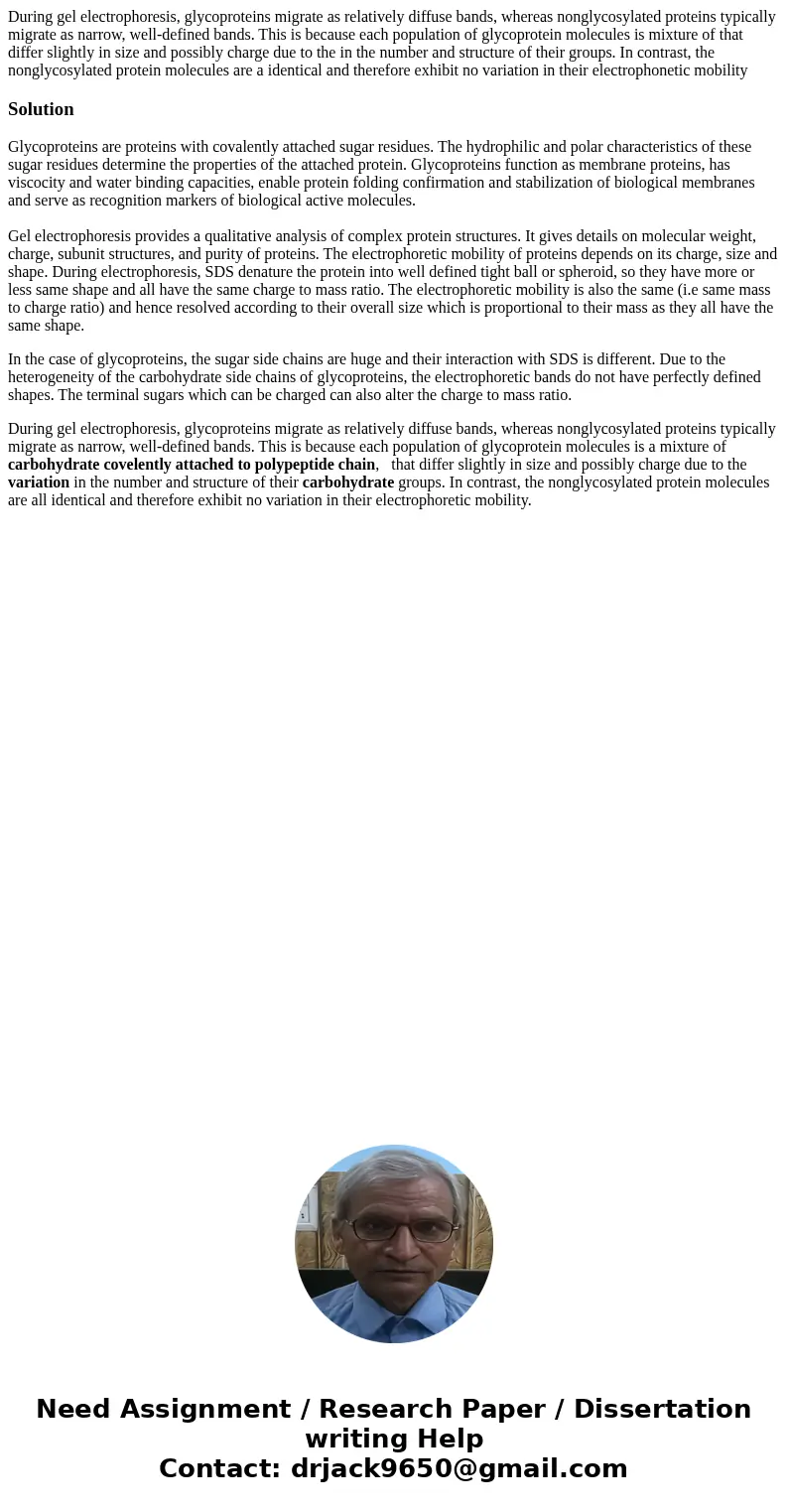During gel electrophoresis glycoproteins migrate as relative
Solution
Glycoproteins are proteins with covalently attached sugar residues. The hydrophilic and polar characteristics of these sugar residues determine the properties of the attached protein. Glycoproteins function as membrane proteins, has viscocity and water binding capacities, enable protein folding confirmation and stabilization of biological membranes and serve as recognition markers of biological active molecules.
Gel electrophoresis provides a qualitative analysis of complex protein structures. It gives details on molecular weight, charge, subunit structures, and purity of proteins. The electrophoretic mobility of proteins depends on its charge, size and shape. During electrophoresis, SDS denature the protein into well defined tight ball or spheroid, so they have more or less same shape and all have the same charge to mass ratio. The electrophoretic mobility is also the same (i.e same mass to charge ratio) and hence resolved according to their overall size which is proportional to their mass as they all have the same shape.
In the case of glycoproteins, the sugar side chains are huge and their interaction with SDS is different. Due to the heterogeneity of the carbohydrate side chains of glycoproteins, the electrophoretic bands do not have perfectly defined shapes. The terminal sugars which can be charged can also alter the charge to mass ratio.
During gel electrophoresis, glycoproteins migrate as relatively diffuse bands, whereas nonglycosylated proteins typically migrate as narrow, well-defined bands. This is because each population of glycoprotein molecules is a mixture of carbohydrate covelently attached to polypeptide chain, that differ slightly in size and possibly charge due to the variation in the number and structure of their carbohydrate groups. In contrast, the nonglycosylated protein molecules are all identical and therefore exhibit no variation in their electrophoretic mobility.

 Homework Sourse
Homework Sourse